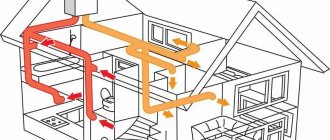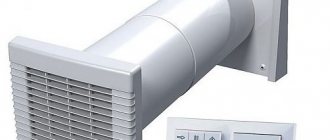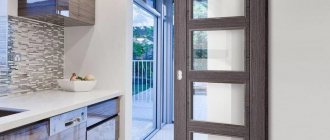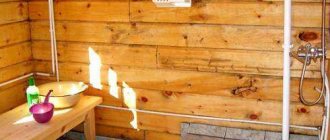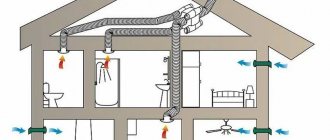The most popular manufacturers
Very often people want to choose the best quality product, but not overpay. Today this is difficult to do due to the fact that there are a large number of companies on the household appliances market and a huge number of models with additional functions, without and with an air duct, various configurations and color schemes.
The best manufacturers are selected based on customer reviews and, of course, the assessment of professionals. So, the best hoods produce:
- Bosch.
- Siemens.
- Coopersburg.
- Best.
- Zanussi.
- Elika.
- Gorenje.
- Samsung.
- Hansa.
- Cronasteel.
It should be remembered that even a time-tested company may produce models that are not of very good quality. Therefore, before purchasing, you should always consult with more experienced people and read reviews.
Undeniable disadvantages
Such silent ventilation for the kitchen is not entirely ideal; with the onset of heat, the system noticeably slows down and does not work at full capacity due to the normalization of temperatures. If you do not open the windows, then the opposite effect may occur; air will flow from the exit into the apartment, and not vice versa.
Removing steam and soot cannot be called the most productive; some elements go away, but not all. If you use the entire cooking surface, the negative impact cannot be avoided; only moderate use of pans and pots can be done by the natural system.
Overview of various models
In order to make a more detailed selection of kitchen hoods, let’s consider the advantages and technical characteristics of several different models. This will help you visualize what manufacturers offer.
Gorenje DU 5345 W
One of the most popular and inexpensive standard wall-mounted kitchen hoods measuring 50 cm.
Mounts under a wall cabinet or independently to the wall. Has a capacity of 325 cubic meters. m/hour and noise level 54 dB.
This model has three operating modes and push-button control. It only works in recirculation mode. Its price is low and amounts to about 2000 rubles. This model is suitable for a small kitchen with an area of 6-8 square meters. meters, even if the volume of food preparation is small.
Kaiser A 9416 WBE
The presented model is 90 cm wide, made of specialized enamel and has decorative elements.
Its productivity is much larger and amounts to 780 cubic meters. m/hour. The noise level is relatively low and amounts to 57 dB.
This hood model can operate either in recirculation mode or be connected to the ventilation system and operate in exhaust mode.
It has a telescopic tube, which allows you to adjust its height. The height of the dome is 64 cm. Despite the visible higher quality characteristics compared to the previous model, it should be taken into account that its price is slightly higher and will range from 10,000 to 11,000 rubles.
Kronasteel Kamilla Wood 2M 600 inox
This model is equipped with a retractable part. With a width of 60 cm, this kitchen hood has a capacity of 550 cubic meters. m/hour and low noise level of 48 dB.
Equipped with two motors, push-button control. The original design with unpainted wood trim makes this model attractive. Suitable for a kitchen with an area of about 10 square meters. m. The cost of this model ranges from 3,500 to 4,000 rubles.
Falmec Twister 45
We especially note the Premium class models. Their designs vary; they can be finished in glass, wood or metal, and have different shapes and colors.
As an example, let's look at the Falmec Twister 45 island model with the E.Ion system. This model has a width of 45 cm and a capacity of only 450 cc. m/hour, but at the same time it is equipped with an air ionization function, due to which it not only neutralizes odors, but also makes the air cleaner and healthier.
The aluminum body has an original cylindrical design. All this together made the cost of such a hood quite high. It is about 105,000 - 110,000 rubles.
When choosing a specific model, all other things being equal, it is better to choose a model from more reliable manufacturers. Firstly, high-quality air purification is largely the key to your health and cleanliness in the kitchen, and secondly, the uninterrupted operation of equipment allows you not to waste time and nerves on repairs, transportation and other unpleasant little things.
Therefore, you should approach your choice carefully and it is advisable not to skimp on it. The most popular manufacturers of hoods are Kaiser, Kronasteel, Gorenje, Siemens, Bosh and others.
How to choose
It cannot be said that corner hoods are the cheapest models. The cost of such devices will largely depend on the power, noise level, design features and design itself, so it is better to initially choose the most correct model.
Let's figure out what features you should pay attention to first. The quality of the hood is evidenced by its performance indicators
The technical documentation for exhaust devices indicates the volume of air that is cleaned during an hour of operation of the equipment.
The quality of the hood is evidenced by its performance indicators. The technical documentation for exhaust devices indicates the volume of air that is cleaned during an hour of operation of the equipment.
The power of the hood should correspond to the volume of your room, multiplied by 12 (cleaning every 5 minutes for an hour) and by a correction factor of 1.3
Please note that the optimal hood power will also depend on how you are used to cooking: during the frying process, the air becomes much more polluted
Important! It is better if you choose a hood with a reserve of power: then your kitchen will remain clean in any case. Power ratings of more than 600 m3 per hour for hoods are already considered high: such equipment is suitable for a kitchen with average parameters.
Be sure to pay attention to the dimensions of the hood. Since the exhaust device is often installed after the kitchen unit has been installed, it is quite possible that you will have to adjust the equipment to the parameters of the wall cabinets
It is not at all necessary that the hood exactly matches their dimensions, but against the background of kitchen furniture it should not look inharmonious.
The standard parameters of corner hoods do not differ from the sizes of other types of exhaust devices and are 50, 60 or 90 mm.
When choosing large appliances (for example, a corner hood 900x900 mm) and hoping for greater productivity, do not forget that there will be less space in your kitchen, and the quality of cleaning will not always improve: it depends on the power and speed of operation, and not on the area of the blower channel.
Tip: T-shaped models in the kitchen interior look more harmonious, as they take up less space. Corner-type dome hoods are best placed if your room has a large area.
Decide right away how important the noise factor of cleaning equipment is to you. Modern hoods can be virtually silent during operation, but this happens quite rarely. The average noise level of hoods ranges from 40-60 dB.
Pay attention to the variety of materials from which the hood is made. Almost all hoods are quite durable and wear-resistant, so this criterion will only affect the design of your kitchen
Hoods can be steel, aluminum, have glass, enamel or ceramic coating, or wood inserts.
Corner hoods can be designed for different areas of the room.
Make sure you choose a model that matches the side of the kitchen work area equipment (sometimes the design is planned in such a way that the hood only fits the right or left corner).
Below in the photo are options for dome and round hoods that fit well into the corner of the kitchen space, independent of the choice of the right or left corner of the work area.
If you choose a retractable model, that is, the hood extends during operation, ensure that there are no barriers: the operation of the hood should not interfere with the opening of wall cabinets, and vice versa.
Placing a hood in the corner of the kitchen is one of the most successful ways to plan a kitchen space. But if you are not sure that this approach to design will allow you to cook with greater convenience, stop at standard models.
Corner hoods are suitable for those who value ergonomics and functionality, but are willing to sacrifice square meters: the beveled shape of the corner area visually masks the free space.
Pay attention to the photo below: if you imagine that there is no hood in the corner, the corner of the kitchen will seem downright defiantly empty!
Selecting the width of the hood
This parameter affects solely the appearance of the device and has little to do with its performance. Modern devices are produced in widths from 350 to 1200 mm, with dimensions of 35, 45, 50 to 120 cm in increments of 10 centimeters. The selection of dimensions is usually determined by the dimensions of the slab or other device over which it is mounted, and is tied specifically to them. In addition, they are guided not by the dimensions of the entire body, but specifically by the exhaust surface.
For the most part, the dimensions of the stoves, and therefore the hoods, depend on the size of the kitchen. So, for kitchen spaces with a square area of less than 12 m2, small tiles for two burners, with a working surface of 45 cm, are suitable; for more spacious rooms, up to 18 m2, 60 cm slabs are suitable.
Device depth
This parameter is most important for dome and built-in versions of the device. For dome hoods, the optimal option is to have equal width and depth of the device, while for built-in hoods the depth varies depending on the retractable part
When installing devices of this type, first of all, take into account the dimensions of the wall cabinets and the distance at which they are located
What height do you need for a kitchen hood?
The height of the device is understood from two angles - the height of the device itself and the height of installation above the stove or other device.
If we talk about geometric dimensions, then we start from how high the ventilation to which the device is connected is located, and how high the ceilings are. If we talk about the height above the stove, the following rule and standard requirements apply:
- for an electric stove, this size must be at least 65 cm;
- for a gas stove – 75 cm;
- for devices with variable tilt in the horizontal plane – 55 cm.
When installing, the device should be positioned correctly, it should not be at eye level. If there is a touch screen on it, the height is selected to ensure comfortable use.
The easiest way
Most apartments use a standard design; kitchen ventilation outlets are designed to suck out carbon dioxide and harmful fumes. And fresh air enters the room through cracks in the windows or special ventilation ducts.
According to the laws of physics, warm vapors rise upward, and the device is often located at the highest point; if everything works perfectly, then there is no need to worry about a small gas leak. The same cannot be said about fumes or soot; such a system does not cope well with such nuances.
Standards and requirements for kitchen exhaust systems
The main requirement for a household air purifier is the correct calculation of the device’s performance. This is necessary for high-quality and timely cleaning and renewal of air in the kitchen.
According to this document, there are two options for calculating the required performance of an exhaust device. The frequency of complete air exchange in the kitchen depends on the equipment:
with a gas stove it is 100 m3/hour;
with an electric stove:
- with two burners – 60 m3/hour;
- with three burners – 75 m3/hour;
- with four burners – 90 m3/hour.
The above standards will help you calculate the required hood performance depending on the time of use.
For example, if a three-burner electric stove is installed in the kitchen, and its maximum continuous operation time is 10 hours (preparing jelly for the New Year), then the capacity of the exhaust device should be 750 m3/hour.
This is available for a group of mid-priced products. The above method is based on average statistical data and cannot claim high accuracy.
The calculations do not take into account the volume of the kitchen space, but for domestic purposes this method is quite suitable.
The second option for calculating the performance of kitchen hoods is more accurate.
Calculations are made according to the formula: P = S × H × 12, where: P is the performance of the air purifier, S is the kitchen area, H is the ceiling height and 12 is the air exchange coefficient according to the standards approved by the SES.
It should be noted that there are no standards for determining the size of the device for a specific room. The power of the hood does not depend directly on its size. The same goes for its shape and appearance. All this is left at the discretion of the user.
Additional amenities
Hoods may also differ in their control features. The standard option is a hood with a button panel: more modern models include slider speed switches. Touch-sensitive exhaust technology with an electronic display is more convenient to use and has the additional advantage of cleaning the housing from dirt.
The hood control type can also be remote. Turning the device on and off, as well as changing modes during operation, is carried out either using the remote control or through voice commands.
Both manual and automatic control processes are convenient if you have chosen a retractable kitchen hood with a slider panel or a model with the ability to adjust the tilt angle.
Both horizontal and vertical hoods are distinguished by their diversity in design. In addition to the main material, chrome steel, glass or wood can be used.
In addition to the decorative properties, pay attention to the size of the equipment itself: some stylized interiors will look more harmonious when using a large hood, while others require greater conciseness and the installation of compact hoods
Remember! Hoods of different sizes differ in maximum power and noise level during operation. Study the technical documentation before choosing the appropriate model.
The next difference between hoods is their functionality. Modern devices are equipped with an auxiliary timer, an automatic shutdown mode, a sensor that signals when filters are dirty, the ability to adjust the brightness of the backlight, and also have many other additional functions.
After studying photos of types of hoods and understanding what kind of kitchen hoods there are in terms of work characteristics and appearance, you can choose the best model for your kitchen.
We recommend that you familiarize yourself with our materials using the links and watch a video about the classification of modern exhaust devices.
Changes that came over time
Before plastic windows, wooden frames were used, outside air flowed into the apartment quite freely, and the operation of the hood was stable, but modern devices provide complete sealing, and in order to achieve good ventilation, you need to constantly open one of the doors.
This is especially unpleasant to do in severe frosts; harmful drafts can harm your health.
Standard kitchen hood dimensions: height, width, depth
When it comes to depth, the first thing that comes to mind is dome devices. Modern equipment of this type has a square shape. The reason for this was a simple fact - hobs are produced in the same shape, so the logic is followed to the maximum.
The depth will correspond to the width, and this is from 40 to 90 cm. Again, it is necessary to select the equipment so that it completely covers the space above the hob.
The choice of height depends on the following factors:
- Type of exhaust device;
- Ceiling height;
- Performance.
The average height of a dome hood will be 125 cm. If you subtract this figure from the height of the ceilings, there should be space left for the height of the stove and the distance between the hob and the hood.
The distance from the hood to the stove: from a gas stove should be at least 65 cm, and from an electric stove - 50-60 cm. In no case is it recommended to reduce the distance - this can lead to the ignition of substances that accumulate on the grill. Also, the height indicator can be found in the manufacturer’s technical documentation.
A much better solution would be to choose retractable hoods. Their height does not exceed 20 cm, so there will be no problems with the height of the ceilings and the distance between the hob and the exhaust device.
Also, there will be no problems if the buyer’s choice falls on a recirculating type of device. Often, equipment of this type is made to a minimum height, because the device does not need to be connected to ventilation ducts.
As mentioned above, the width of the hood should correspond to the dimensions of the stove or be larger. The optimal width is 60-80 cm. It is not recommended to purchase equipment that is narrower than the cooking surface - a considerable part of the fumes will bypass the device and accumulate on the ceiling. And cleaning the hood will be difficult.
Recommendations from the experts
Before you start creating the ventilation system in question, you need to double-check all the calculations made several times in order to avoid making a mistake, which can then be costly. Experts also advise using only proven components from well-known manufacturers. Otherwise, there is a risk that a fan may fail, which will disrupt the entire operation of the ventilation system.
If you cannot perform any procedure with your own hands, you should not hesitate to contact a specialist. It is better to spend a little time and money on consulting a professional than to make a mistake on your own that could disrupt the operation of the entire system.
How to calculate the power and performance of a kitchen hood depending on the area of the room
The higher the exhaust power, the faster the air will be purified. The required productivity for a given room can be found in the table, where the calculations are based on the area of the kitchen and its height. The lowest productivity is for cheap models, approximately 200-300 m3/h. They can be installed only in small kitchens and provided that food is not cooked on the stove very often. If the hob is used frequently, then the power should be at least 600 m3/h.
Formula for calculating the power of a kitchen hood
You can do the calculations yourself using a simplified formula:
Q – exhaust power (m3/h);
S – kitchen area;
H – kitchen height;
12 – coefficient (number of air replacement cycles per hour)
According to sanitary standards, 10-15 air replacement cycles should occur within an hour. The factor 12 is the chosen average value.
With these values it turns out:
Other factors to consider
Calculations using the formula have an average value, because other nuances must be taken into account:
- Hob type. For an electric stove, the coefficient reading can be up to 15, because apart from the fumes from the products, no other substances enter the air. But with a gas stove, harmful substances from gas combustion also enter the air. In this case, the coefficient is taken from 20.
- Hood type. When using flow-through, it is necessary to take into account the throughput of the existing ventilation shaft. With recirculation, this factor does not matter.
- Room layout. If there is an open entrance to the next room or the door there is often opened, then you need to take into account the large area of the room when calculating.
Purpose of household fans
The devices are installed when the quality of air exchange is poor. The devices are especially needed in kitchens, bathrooms, laundries, dressing rooms and living rooms with poor natural ventilation.
The problem of lack of air flow is especially pronounced in bathrooms where there are no windows. High humidity promotes the appearance of fungus, mold, and the smell of dampness. The ventilation systems included in the project are aimed at removing air masses by gravity. This is not enough, so apartment owners install forced systems.
This need arises when:
- design errors or clogging of the ventilation duct;
- installing a powerful hood in a neighboring apartment;
- increased tightness of doors and windows;
- the location of the building near a reservoir, close to groundwater;
- being at home in an area with a hot, humid climate.
Gravity ventilation is not always effective at removing kitchen odors.
Exhaust fans perform the following functions:
- remove excess moisture;
- prevent the appearance of condensation on glass;
- speed up drying of laundry;
- refresh the room.
Exhaust fans remove excess moisture.
Duct pipe size
The cross-section of the duct directly affects performance. To ensure efficient operation of the device, the path from the equipment to the channel should be as short as possible without bends.
It would be easy to install the equipment directly under the vent, but this option becomes impossible in most cases. If the opening of the ventilation duct is located further than the equipment, they are connected using special pipes so that the route is short and has a minimum of bends and differences.
Dimensions of plastic pipes for exhaust hood
There are two types of pipes:
- Plastic or corrugated with a cross-section from 80 to 120 mm;
- Plastic round pipes with a cross section from 125 to 150 mm.
The cross-section of the ventilation pipe must match or be one size larger than the exhaust pipe. This is the main rule that should be followed when choosing ventilation pipes.
It is recommended to seal the ventilation ducts as much as possible at the time of pipe installation, so that the pressure is constant and the device spends less energy transporting air.
Beneficial features
High-quality built-in ventilation for the kitchen has a number of advantages, including a reduction in the following influencing factors:
- Unpleasant child.
- Evaporation of water.
- Removing odors.
Most dishes require a process of cooking or stewing, which introduces moisture into the air. The steam gradually settles in the room and turns into water droplets, which, in turn, fall on the walls and window slopes.
If left unchecked, mold or mildew will develop and your wood furniture may deteriorate or last much less time. When heated, oils and fat release certain substances and settle on the floor and textiles, and if this happens in all rooms at once, disastrous consequences cannot be avoided.
What you need to know when choosing a kitchen hood
The first is, of course, design. The hood should fit into the interior of your kitchen and not spoil it. If, for example, all your kitchen parts, furniture and accessories are made of wood or “wood-like”, then installing a sparkling hood made of polished stainless steel will not be correct. Then you should choose a hood with a wood-like design.
The second is functionality and manageability. Those. Using keys or sensors on the hood, and maybe even a remote control, you select the operating modes of the hood. A kitchen hood can be equipped with lighting, a timer, a clock, a filter contamination indicator, etc.
Third is the performance of the hood (air exhaust system). According to sanitary standards, the air in the room should be changed 12 times per hour. From here we calculate the performance of the hood. We calculate the volume of the kitchen - length x width x height - and multiply the resulting number by 12. For example: length 4 m, width 3 m, height 2.5 m. 4*3*2.5*12= 360 cubic meters\ hour. It is better to buy a hood with a performance greater than required. This will allow the hood to operate under extreme conditions and will extend its service life. There are hoods with anti-return valves, that is, they limit the flow of air from the ventilation to your kitchen, while seamlessly removing polluted air from the room.
Fourth – the size of the hood. As a rule, the size of the hood is chosen slightly larger than the size of the stove. At the same time, the higher the hood is located, the wider it should be. It is recommended to install the hood at a height of about 70-80 cm on a gas stove, and at a height of 60-70 cm above an electric stove.
Fifth - noise level. As a rule, all hoods have fans and they tend to make noise when operating
When purchasing, pay attention to the noise level indicated in the product data sheet. It should be no more than 40 dB
Less is better.
Where should it be located
When you buy a hood, it always comes with instructions that indicate where to install the device and at what distance from the hob. The hood can be built into or under a cabinet, provided it is the same size as the hob and hangs level above it. Also, before you buy a hood, consult with specialists about its characteristics. For example, a small appliance will not fit in a large kitchen, and a small kitchen does not need a very powerful appliance.
Main types of hoods
Let's begin our review of the main types of kitchen hoods by classifying devices according to the structural features of their body.
Depending on how much space the hood occupies and how it is installed in the kitchen work area, three types can be distinguished:
Flat hood. This option has the most compact form and purifies the air without additional connections. Flat hoods are attractive because they allow you to save space in a small kitchen and visually expand your interior. The flat housing contains filters that allow contaminated air to pass through, but they have a short service life and require periodic replacement: this is the main disadvantage of such devices.
A dome hood is a more attractive option in terms of performance, since such equipment is often connected to a ventilation duct and provides a fairly powerful air outflow from the room
The fans installed in the housing of such hoods are larger in size compared to small fans for flat models, so large dome-type hoods are most often installed in spacious kitchens, where it is important to clean even the most remote areas of unpleasant odors. The next type is a built-in kitchen hood: these models have a principle of air purification similar to the first two options, but differ in the possibility of installation in furniture, a niche in the wall, a countertop or a ceiling. Thanks to the ease of masking all extraneous elements of the exhaust device, built-in hoods are gaining popularity today.
Advice: if you decide to use built-in appliances, make sure that the dimensions of the furniture correspond to the parameters of the selected exhaust model.
If you don’t want to adjust the size of furniture and equipment, choose an independent kitchen hood. It is these types of exhaust hoods that are the majority on the market, and today high performance indicators are typical not only for large dome hoods, but also for compact ergonomic models.
Purpose and principle of operation of the device
An exhaust fan circulates air in the room.
It absorbs unpleasant and heavy air, and emits purified and fresh air. Each apartment has holes in the wall that lead to the general ventilation duct of the house. But over time, such air vents become clogged, their power weakens, and therefore the process of absorption of foreign particles in the air slows down. An exhaust fan improves the air exchange process.
The kitchen fan is a compact device with blades. The device operates after being connected to the mains. Starting to actively rotate, the blades draw in the “waste” air from the kitchen, push it through the device and push it out. The system of many fan models prevents the return of such air thanks to a special valve.
A kitchen exhaust fan can be installed in a kitchen that already has a hood above the stove. Working in tandem, these two devices will enhance each other's effectiveness.

